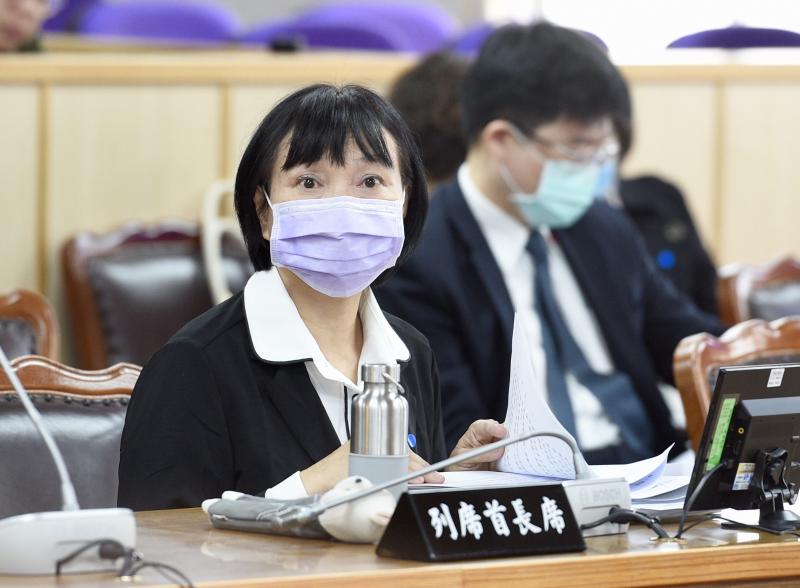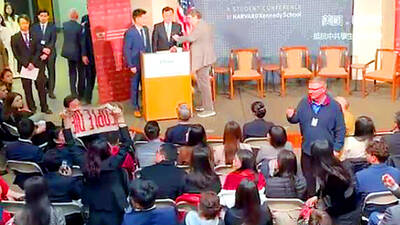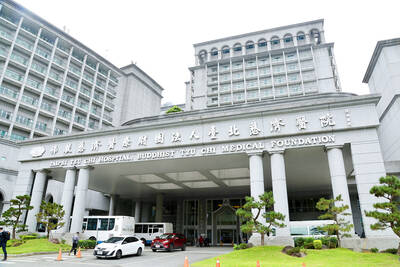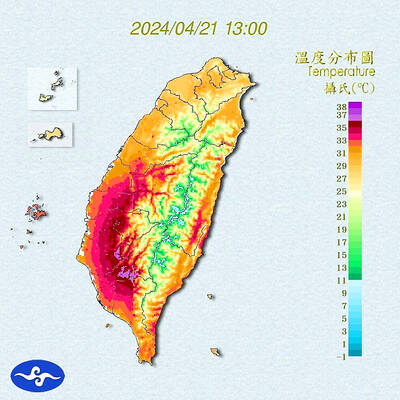A lawmaker yesterday called for progress on plans to transform the Chiang Kai-shek Memorial Hall into a public space, suggesting that it be converted into a “dictator history park” (獨裁者時代公園).
At a meeting of the legislature’s Judiciary and Organic Laws and Statutes Committee, Democratic Progressive Party Legislator Tsai Yi-yu (蔡易餘) said that the venue in Taipei could be converted into a “dictator history park” to educate the public and as reminder of Chiang Kai-shek’s (蔣介石) brutal autocratic rule in Taiwan, as his regime’s White Terror era spanned four decades.
“I call on the commission to adopt this change... there is nothing wrong with it. Everybody in the world knows that Chiang Kai-shek was a dictator,” he said.

Photo: Peter Lo, Taipei Times
Transitional Justice Commission Chairwoman Yang Tsui (楊翠) said that a cross-agency task force has been set up to deal with the matter and the commission would continue to discuss the matter with the Ministry of Culture.
Tabling the commission’s report on transitional justice within judicial agencies, she said that official documents have revealed that 70 percent of chief judges were card-carrying members of the Chinese Nationalist Party (KMT) during the Martial Law era.
Yang said the documents showed that prior to 1992, among the 119 chief judges who had served as Judicial Yuan president, or headed its Public Functionary Disciplinary Sanction Commission, “83 ... were confirmed KMT members.”
The information came from documents from the Judicial Yuan, and a requisite from Academia Historica on files from offices of head commissioners who headed up the Military Affairs Commission, which listed the chief judges’ curricula vitae and their party registration, she said.
The report also found that during the KMT’s rule, party officials abused their power to place party members in government ministries and agencies, and manipulated the justice system, Yang said.
A study is under way on KMT membership among the chief prosecutors and prosecutor-generals prior to 1992, or during the Martial Law era, she said, adding that the current report focused on past Judicial Yuan presidents and chief judges who headed up its Public Functionary Disciplinary Sanction Commission.
As an example of the KMT dictating judicial agencies’ policies, she said that the files contained an official letter sent from the KMT Central Committee, giving instructions to then-Judicial Yuan president Hsieh Kuan-sheng (謝冠生).
“The letter was addressed to ‘Party Comrade’ Hsieh Kuan-sheng, Convenor of Political Affairs Unit at Judicial Yuan. It was not addressed to Hsieh as Judicial Yuan president. This is clear evidence that Chiang ... as the nation’s president and the KMT’s leader was giving orders, and that Hsieh received ... instructions as a KMT member,” Yang said.

A group of Taiwanese-American and Tibetan-American students at Harvard University on Saturday disrupted Chinese Ambassador to the US Xie Feng’s (謝鋒) speech at the school, accusing him of being responsible for numerous human rights violations. Four students — two Taiwanese Americans and two from Tibet — held up banners inside a conference hall where Xie was delivering a speech at the opening ceremony of the Harvard Kennedy School China Conference 2024. In a video clip provided by the Coalition of Students Resisting the CCP (Chinese Communist Party), Taiwanese-American Cosette Wu (吳亭樺) and Tibetan-American Tsering Yangchen are seen holding banners that together read:

UNAWARE: Many people sit for long hours every day and eat unhealthy foods, putting them at greater risk of developing one of the ‘three highs,’ an expert said More than 30 percent of adults aged 40 or older who underwent a government-funded health exam were unaware they had at least one of the “three highs” — high blood pressure, high blood lipids or high blood sugar, the Health Promotion Administration (HPA) said yesterday. Among adults aged 40 or older who said they did not have any of the “three highs” before taking the health exam, more than 30 percent were found to have at least one of them, Adult Preventive Health Examination Service data from 2022 showed. People with long-term medical conditions such as hypertension or diabetes usually do not

POLICE INVESTIGATING: A man said he quit his job as a nurse at Taipei Tzu Chi Hospital as he had been ‘disgusted’ by the behavior of his colleagues A man yesterday morning wrote online that he had witnessed nurses taking photographs and touching anesthetized patients inappropriately in Taipei Tzu Chi Hospital’s operating theaters. The man surnamed Huang (黃) wrote on the Professional Technology Temple bulletin board that during his six-month stint as a nurse at the hospital, he had seen nurses taking pictures of patients, including of their private parts, after they were anesthetized. Some nurses had also touched patients inappropriately and children were among those photographed, he said. Huang said this “disgusted” him “so much” that “he felt the need to reveal these unethical acts in the operating theater

Heat advisories were in effect for nine administrative regions yesterday afternoon as warm southwesterly winds pushed temperatures above 38°C in parts of southern Taiwan, the Central Weather Administration (CWA) said. As of 3:30pm yesterday, Tainan’s Yujing District (玉井) had recorded the day’s highest temperature of 39.7°C, though the measurement will not be included in Taiwan’s official heat records since Yujing is an automatic rather than manually operated weather station, the CWA said. Highs recorded in other areas were 38.7°C in Kaohsiung’s Neimen District (內門), 38.2°C in Chiayi City and 38.1°C in Pingtung’s Sandimen Township (三地門), CWA data showed. The spell of scorching